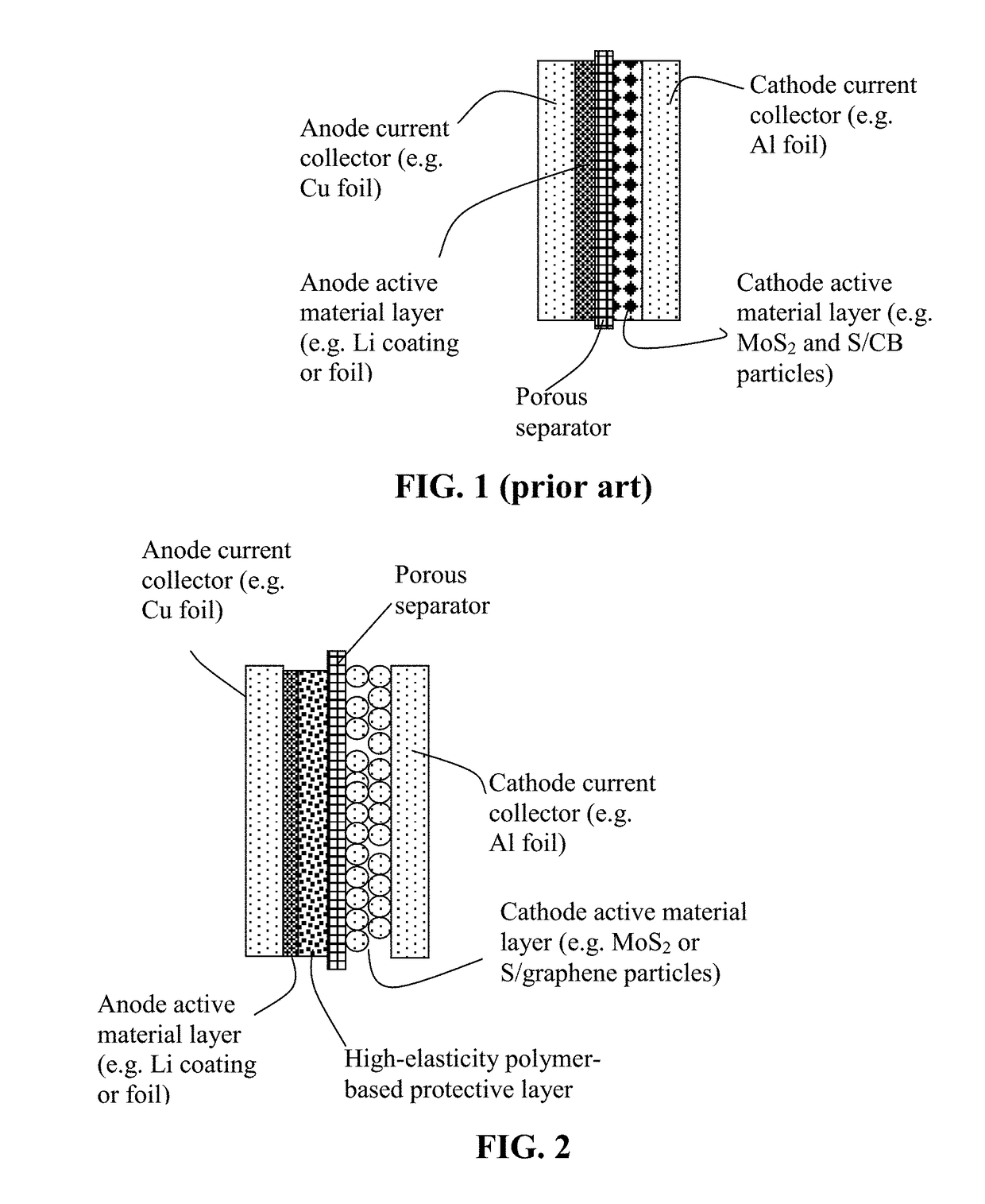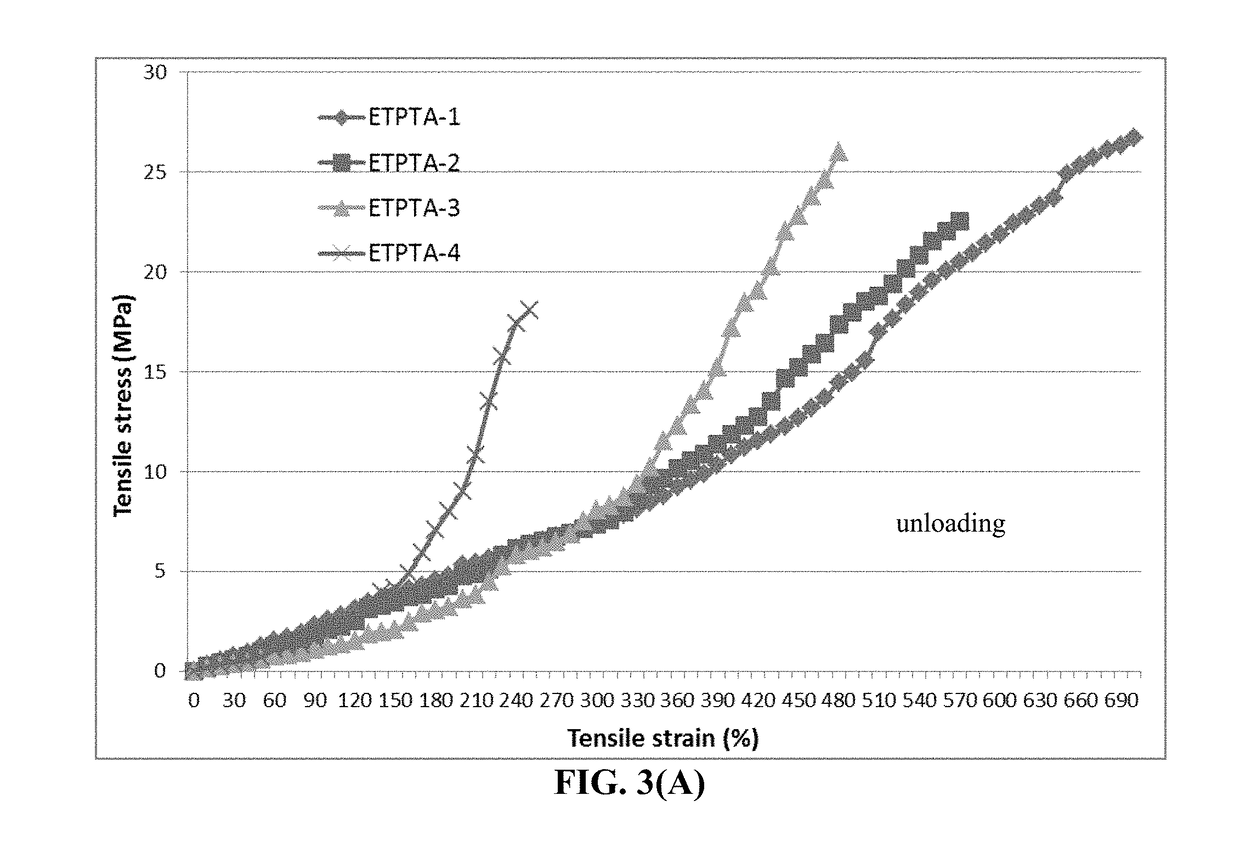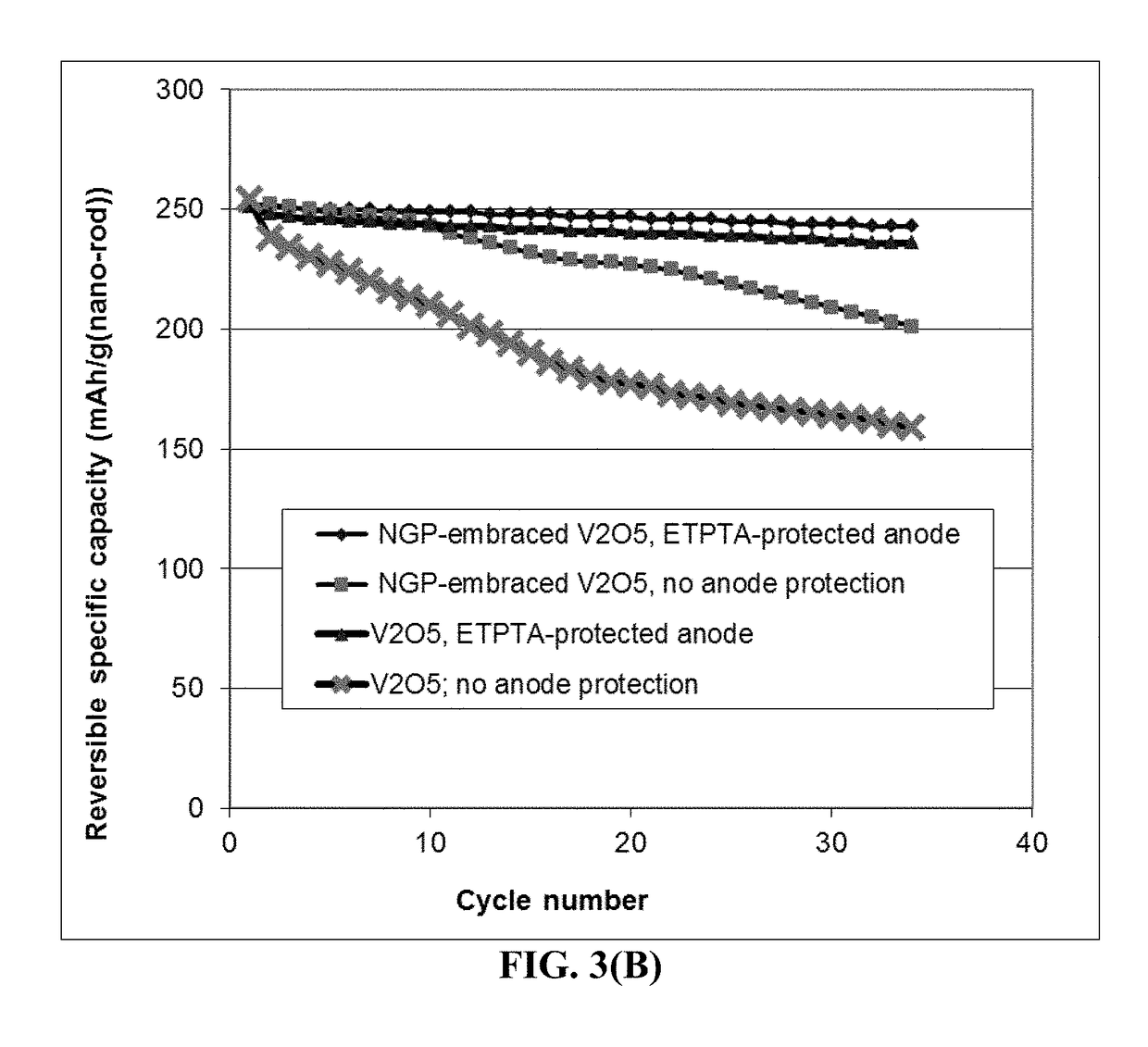Lithium Anode-Protecting Polymer Layer for a Lithium Metal Secondary Battery and Manufacturing Method
a secondary battery and lithium metal technology, applied in the direction of cell components, final product manufacturing, sustainable manufacturing/processing, etc., can solve the problems of internal electrical shorting and thermal runaway, unsafe conditions in the battery, and further commercialization, and achieve the effect of improving the lithium ion conductivity of the polymer
- Summary
- Abstract
- Description
- Claims
- Application Information
AI Technical Summary
Benefits of technology
Problems solved by technology
Method used
Image
Examples
example 3
Cells Containing Metal Fluoride Nano Particle-Based Cathode and a PETEA-Based High-Elasticity Polymer-Protected Lithium Anode
[0111]For serving as an anode lithium metal-protecting layer, pentaerythritol tetraacrylate (PETEA), Formula 3, was used as a monomer:
[0112]In a representative procedure, the precursor solution was composed of 1.5 wt. % PETEA (C17H20O8) monomer and 0.1 wt. % azodiisobutyronitrile (AIBN, C8H12N4) initiator dissolved in a solvent mixture of 1,2-dioxolane (DOL) / dimethoxymethane (DME)(1:1 by volume). The PETEA / AIBN precursor solution was cast onto a lithium metal layer pre-deposited on a Cu foil surface to form a precursor film, which was polymerized and cured at 70° C. for half an hour to obtain a lightly cross-linked polymer.
[0113]Additionally, the reacting mass, PETEA / AIBN (without conductive additive), was cast onto a glass surface to form several films that were polymerized and cured to obtain cross-linked polymers having different degrees of cross-linking. T...
example 4
c Cell Containing a Metal Naphthalocyanine / Reduced Graphene Oxide (FePc / RGO) Hybrid Particulate Cathode and a High Elasticity Polymer-Protected Li Foil Anode
[0117]Particles of combined FePc / graphene sheets were obtained by ball-milling a mixture of FePc and RGO in a milling chamber for 30 minutes. The resulting FePc / RGO mixture particles were potato-like in shape. Some of these mixture particles were encapsulated by an UHMW PAN polymer using the pan-coating procedure. Two lithium cells were prepared, each containing a Li foil anode, a porous separator, and a cathode layer of FePc / RGO particles (encapsulated or un-encapsulated).
[0118]For preparation of an ETPTA semi-IPN polymer, the ETPTA (Mw=428 g / mol, trivalent acrylate monomer), EGMEA (Mw=482 g / mol, monovalent acrylate oligomer), and 2-hydroxy-2-methyl-1-phenyl-1-propanone (HMPP, a photoinitiator) were dissolved in a solvent (propylene carbonate, PC) to form a solution. The weight ratio between HMPP and the ETPTA / EGMEA mixture was...
example 5
s Containing an Anode-Protecting Layer and a Cathode Containing Sulfur-Impregnated Activated Carbon Particles
[0120]One way to combine sulfur with a conducting material (e.g. carbon / graphite particles) is to use a solution or melt mixing process. Highly porous activated carbon particles, chemically etched meso-carbon micro-balls (activated MCMBs), and exfoliated graphite worms were mixed with sulfur melt at 117-120° C. (slightly above the melting point of S, 115.2° C.) for 10-60 minutes to obtain sulfur-impregnated carbon particles.
[0121]FIG. 7 shows the cathode specific capacity values of two Li—S batteries having a cathode active material based on a S-impregnated activated MCMB: one cell having a cross-linked ETPTA-protected anode and the other one having no anode protection layer. It is clear that the lightly cross-linked ETPTA polymer layer implemented at the anode is highly beneficial to the cycle stability of the Li—S battery.
PUM
 Login to View More
Login to View More Abstract
Description
Claims
Application Information
 Login to View More
Login to View More - R&D
- Intellectual Property
- Life Sciences
- Materials
- Tech Scout
- Unparalleled Data Quality
- Higher Quality Content
- 60% Fewer Hallucinations
Browse by: Latest US Patents, China's latest patents, Technical Efficacy Thesaurus, Application Domain, Technology Topic, Popular Technical Reports.
© 2025 PatSnap. All rights reserved.Legal|Privacy policy|Modern Slavery Act Transparency Statement|Sitemap|About US| Contact US: help@patsnap.com



